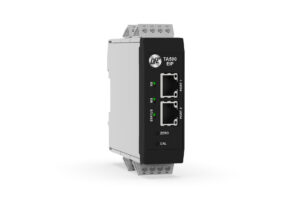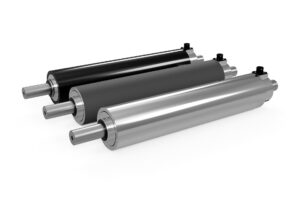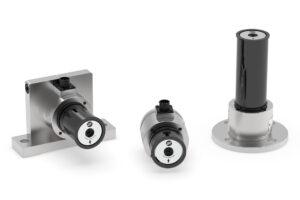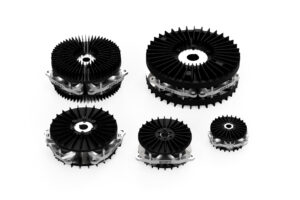Why Load Cell “Resolution” Isn’t A Simple Question
An explanation of the factors that contribute to a tension measurement system’s performance.
“What is your load cell resolution?” may be the most common question we hear while collaborating to spec a new tension control system. While it would be convenient to provide a discrete number or range and call it a day, resolution must truly be considered within the context of all of the components and processes that lead up to the final signal output. Factors such as strain gauge technology, signal conditioning, gain factor, response time and signal output type (analog or digital) all play a role in contributing to the stability and scalability of the instrument.
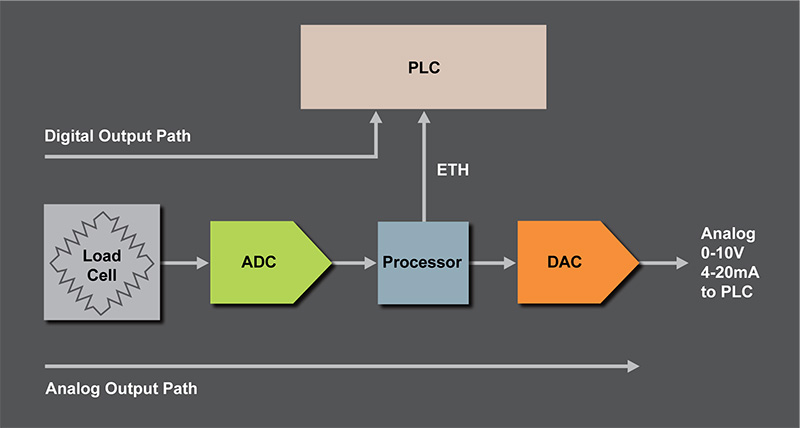
INPUT SIGNAL: THE STRAIN GAUGE
Most tension load cell designs incorporate one of two competing technologies – semiconductor strain gauge or foil strain gauge. Both technologies operate similarly, a supply voltage “excites” the gauge, then as strain (mechanical deflection) is introduced, an output voltage proportional to force is observed.
Semiconductor-type strain gauges are superior to foil-type strain gauges in terms of signal output capability and resistance to electrical noise. A typical semiconductor gauge is capable of returning up to 50 mV per excitation volt. In contrast, typical foil gauges output only 1 to 2 mV per excitation volt. For semiconductor-type load cells, this sensitivity advantage results in 25 to 50 times more output, providing a superior overall signal-to-noise ratio. Additionally, a foil gauge’s higher amplifier gain factor makes it more susceptible to EMI and RF interference.
GARBAGE IN, GARBAGE OUT
While semiconductor strain gauges have an impressive signal advantage that contributes to both signal stability and scalability, technically both gauge technologies have infinite resolution by virtue of their analog design. However, in practical use, load cells that interface with modern amplification circuitry must undergo digitization via analog-to-digital conversion (ADC). Strain gauges with wider dynamic range tend to deliver better results overall during the conversion process.
Many modern ADCs feature 24 bit processing with an initial sample rate as high as 16,777,216. Less sophisticated ADCs may use 16 or even 12 bit sampling rates. A 24 bit ADC can capture 256 times more sampling information compared to 16 bit. This additional granularity is important when the final signal conditioning goal is to quiet the noise floor while preserving fidelity.
Note: Amplifiers with minimal or marginal front-end downsampling architectures tend to struggle to hand off a clean signal, and may rely on more aggressive processor overhead to approximate signals at the cost of true resolution and response time.
NOT ALL AMPLIFIER RESOLUTION IS CREATED EQUAL
In practice, tension systems from different manufacturers with the exact same theoretical amplifier resolution can achieve vastly different real-world results. In figure 1 below, the PLC trend plot compares a semiconductor strain gauge system (blue line) to a foil strain gauge system (green line). Both load cell systems are connected by way of their respective amplifiers via Ethernet connections. Both amplifier manufacturers list the same 12 bit DAC output specification, capable of registering up to 4,096 discrete values.
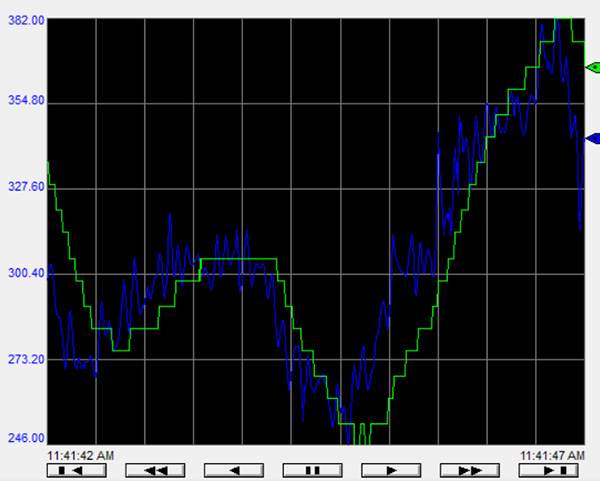
Figure 1 – Competing load cell amplifiers with vastly different resolution displayed in a PLC trend plot
However, as observed in the graphic, the semiconductor strain gauge amplifier with 24 bit ADC is able to resolve impressive micro-tension measurements within the plot, while the foil gauge amplifier with 16 bit ADC appears to return significantly lower resolution and slower response times.
ACHIEVING MAXIMUM SYSTEM PERFORMANCE
While a number of factors can contribute to the final performance of any tension measurement system, it is clear that comparing the theoretical output resolution of amplifiers alone is not enough to determine the true resolution of a tension control system. For this reason, using discretion in the area of component selection is still recommended.
Load cells should be selected that provide adequate signal output for the scaled range of operation that is required. Machines that operate at a wide range of tensions (greater than 10:1) should utilize a load cell technology with high scalability such as semiconductor strain gauge. If foil gauge load cells are the only option available, deploying multiple sets able to cover both the upper and lower range of operation is advisable.
The selection of amplifiers with an ADC input resolution of at least 24 bits is recommended to provide adequate downsampling performance for superior noise reduction and signal fidelity. While DAC (or digital output) resolution of at least 10 bits (preferably 12 bits) is also recommended to enable true resolution of 0.1% or better.
While it would be a huge convenience for applications engineers to have a “resolution” spec ready to drop at a moment’s notice – due to the differences in tension equipment design methodologies, comparative tension system performance may only be possible to qualify in engineering labs and real-world testing environments.
Do you have a similar tension application that you would like to discuss?
Complete the form below and a DFE Applications Engineer will contact you shortly.
DFE does not share information with 3rd party advertisers.
RESOURCES
Tech Bulletin: Why Load Cell "Resolution" Isn't A Simple Question (PDF)


